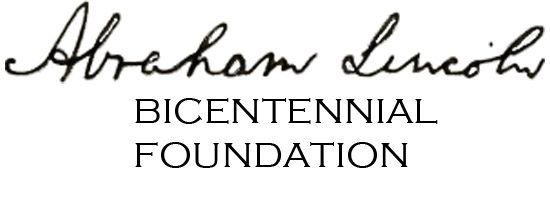
Credit: Dual Freq – Own work, CC BY 2.5, Wikimedia Commons
Abraham Lincoln’s 31-year association with Macon County began in the middle of March 1830, when a party of 13 people, all related, stopped in a cleared area in the tiny village of Decatur.
“The wagons creaked to a halt in front of an unfinished log building in a clearing. Nearby, smoke curled from the chimney of one log cabin and other cabins could be seen among the trees. Decatur now calls that muddy clearing Lincoln Square.” (Kyle, p.12). The partially finished building they stopped in front of would be Decatur’s first Courthouse. They also found a general store, a tavern, a cabin that housed the Post Office, and ten or twelve other cabins scattered through the trees. Two stump filled streets crossed in the clearing, both of which had been given the name “Main Street.”
Lincoln had learned the art of rail splitting in Indiana, and he put it to good use in Decatur. In addition to splitting rails for his father’s farm on the banks of the Sangamon River, he and John Hanks split more than three thousand rails for William Warnick, sheriff of Macon County. He also partnered with George Close to split rails for James Hanks and William Miller, for which he was often paid in homespun clothing. Mrs. Miller, John Hanks’ sister, paid Lincoln one yard of homespun brown jeans for every 400 rails split. It is likely that he had to split more than 1000 rails to earn enough yardage to make trousers to fit his long legs.
In addition to splitting rails, Mr. Lincoln also did general farm work at Sheriff Warnick’s farm. He was a seemingly tireless worker, and one evening he gave a political speech after spending the entire day reaping and wrestling at the sheriff’s farm. Lincoln’s supposed first political speech in the square was probably not actually his first. He had been speaking at impromptu gatherings and parties in the Decatur area for some time. That day in the square, he was asked to speak after two candidates for office had spoken, so he was probably already known for his abilities. But this speech in the square brought him to the attention of others outside this area. He spoke on the navigation of the Sangamon and one of those who spoke that day, State Representative Posey, introduced a resolution in the Legislature “that the committee on internal improvements be instructed to inquire into the expediency of opening the navigation of the Sangamon River as far as Decatur in Macon County.”
Sometime later, a fall through the ice while walking on the Sangamon River resulted in frostbitten feet for Lincoln. During his three week recuperation at Sheriff Warnick’s home, the young Lincoln exhibited his early interest in studying law by reading the Illinois Statutes.
The first courthouse in Decatur was on a lot on the southwest side of Lincoln Square (IMAGES 1-2). This was the unfinished building the Lincoln party stopped in front of when they arrived in Decatur in March 1830. Lincoln’s cousin John Hanks was hired to do the chinking and daubing of it in December 1830. Eight years later, Lincoln would be back in this courthouse as a lawyer.
In December 1830, Lincoln took time out from his labors to do an appraisal for the county. The County Commissioners records state:
“We the under signers having been called on to appraise an Estray Mare taken up by Jonathan B. Brown on Monday the 12th day of Dec. 1830; Do find horse to be four years old next Spring a bright bay 14 hands high – a Small blas(e) and a Snip in her face – right hind foot white – white fore foot with a white Stripe down the hough and white hairs around the edge of the hough no brands perceivable black mane and tail appraised to 30 Dollars. Given under hands this 16th day of December 1830.” (ibid p.31). This appraisal was signed by A. Lincoln and John W. Reed.
The Fall and Winter of 1830-1831 were difficult ones for the Lincoln family. They suffered from the ague, “Illinois Shakes”, as did most others in the area. When came the winter which became known as the “Winter of the Big Snow”, snowstorms followed each other in rapid succession, often interspersed with sleet storms. The cold was intense and the Lincolns had to ask neighbors for corn to get through the winter. Following that experience, Thomas Lincoln decided to leave the area.
That February Denton Offutt arrived in Decatur from Kentucky looking for John Hanks. Hanks had experience taking flatboats from Kentucky to New Orleans, and Offutt thought it would be profitable to take goods south from Illinois. Lincoln, Hanks, and Lincoln’s stepbrother John Johnston left with Offutt in a canoe in March 1831.
Lincoln had lived in Macon County just a year, and although he never lived here again, he was found here often for court, to visit friends, and for political reasons. People in Decatur and Macon County remained strong supporters of Mr. Lincoln and he did not forget about Decatur after he sought his fortune a little further west, first in New Salem and then Springfield.
Bibliography
Kyle, Otto R. Abraham Lincoln in Decatur. New York, Vantage Press, c.1957
Johns, Jane Martin. Personal Recollections: of Early Decatur. Decatur, DAR, c.1912
Adapted from “Abraham Lincoln in Decatur: A Narrative History,” prepared by the Decatur (IL) Public Library. Used with permission.
